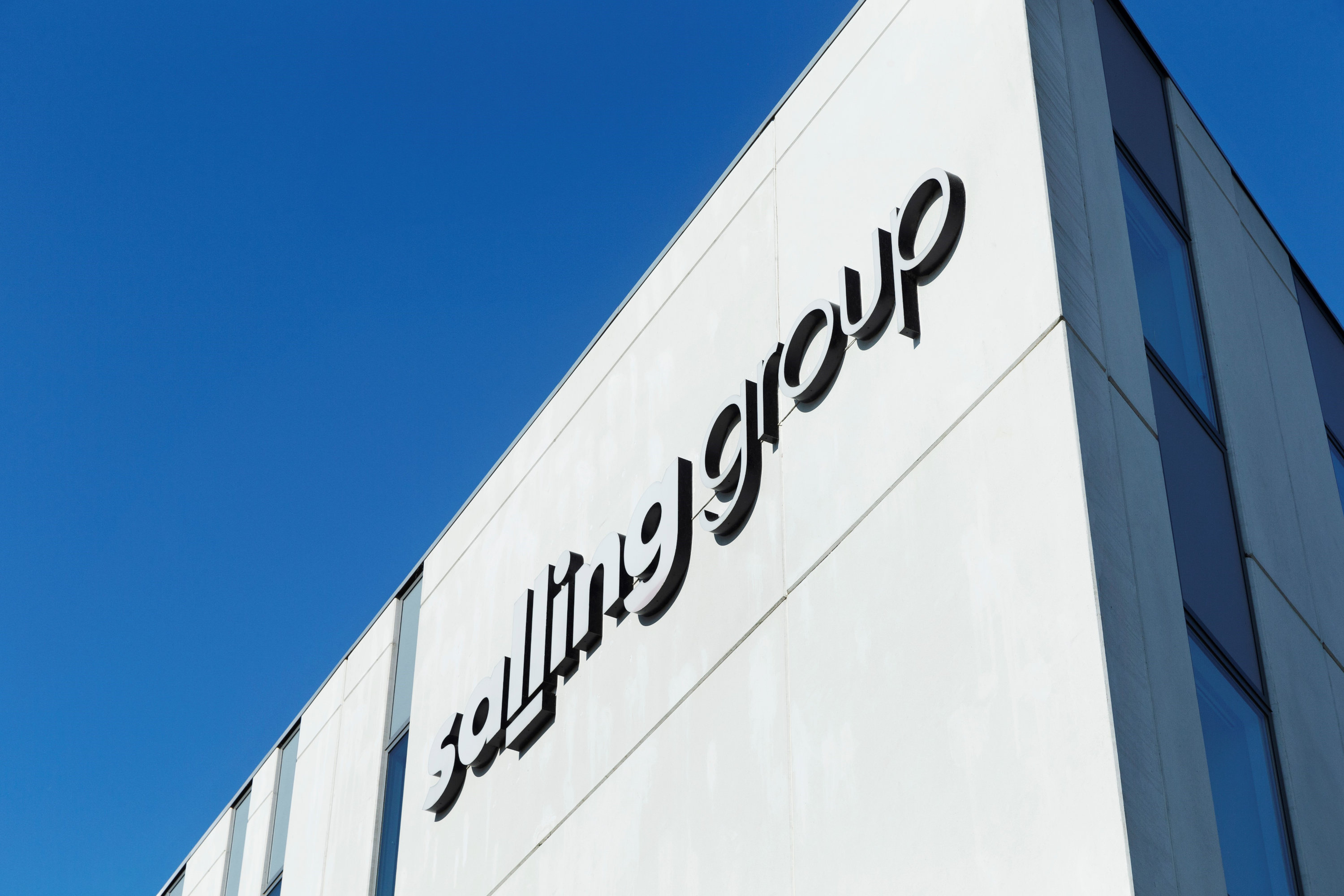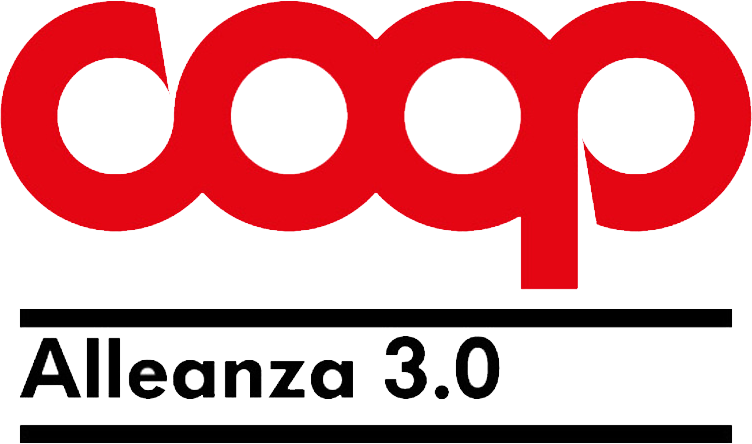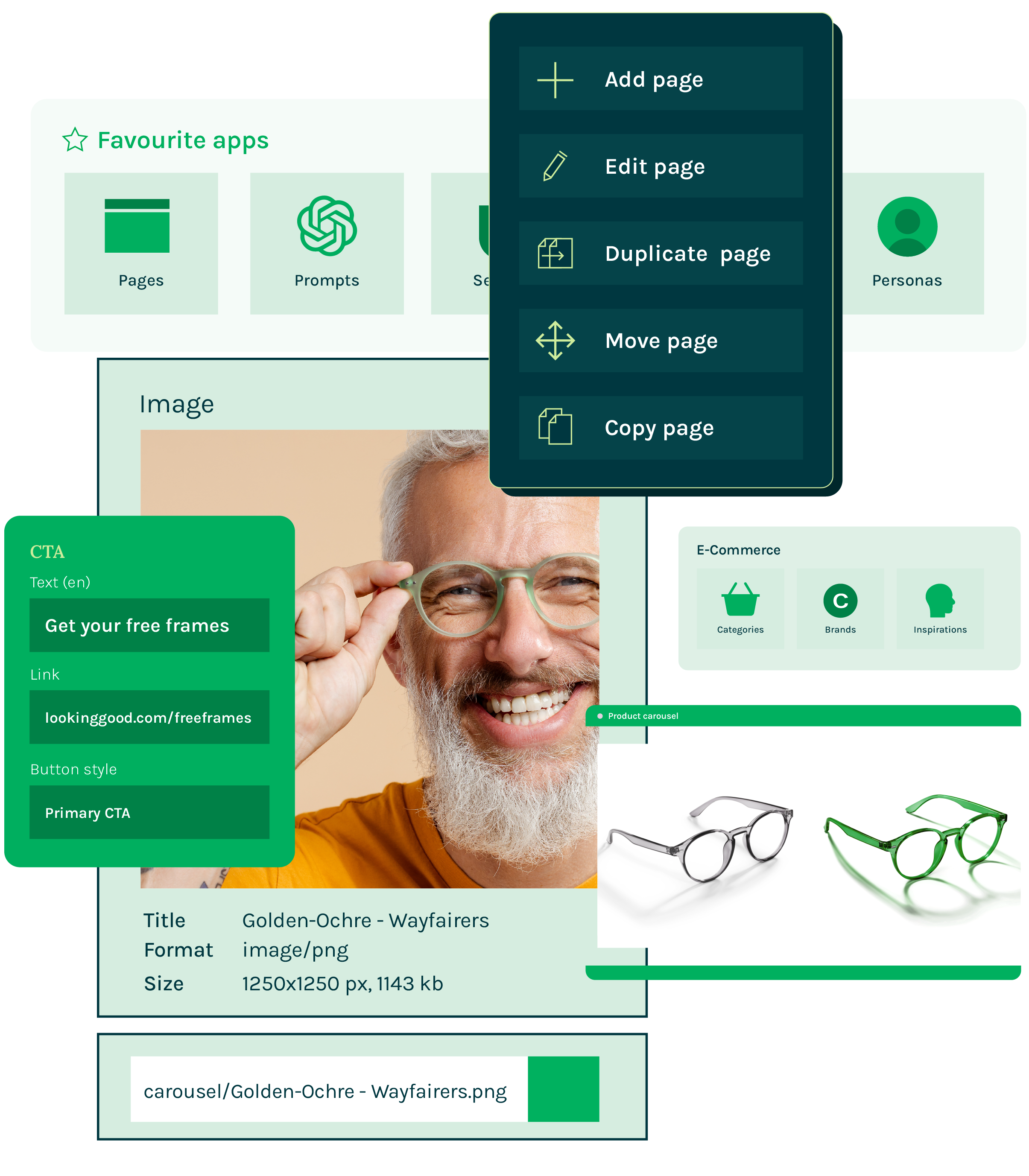SALLING GROUP + MAGNOLIA
Denmark's largest retailer cut costs and sped up e-commerce content delivery with Magnolia


websites
cost savings
more monthly releases
About the customer
In business for 120 years, Salling Group today is Denmark’s largest retailer, with a market share of approximately 35 percent. The organization serves 15 million customers per week online and through more than 2,100 brick-and-mortar stores in Denmark, Germany, Poland, Estonia, Latvia, and Lithuania.
Having grown through acquisition, the Salling Group operates several leading Danish and European brands, including Salling, Bilka, Netto, føtex, BR, and Rimi Baltic. It also holds franchise rights for Starbucks and Carl’s Jr. in Denmark. “In retail, where margins are low, acquisition is often a key strategy for growth,” says Ismael García, Enterprise Architect at Salling Group. “Acquiring other companies helps us increase market share in Denmark and beyond.”
To support e-commerce efforts for all of these brands, Salling Group’s digital technology team manages more than 20 websites. For years, that work meant using multiple e-commerce and content management platforms. The team needed ways to streamline operations and simplify content publishing so they could deliver more engaging, consistent digital experiences to millions of customers.
The Challenge
Reduce the complexity and costs of managing multiple platforms
As the Salling Group acquired new businesses, the digital technology team was faced with managing additional platforms. “We gained another e-commerce or marketing platform with each new acquisition. This created a very scattered technology landscape that was costly to manage,” says García. “Until recently, we had eight e-commerce platforms, which could be seven too many. Ultimately, our goal is to have a consolidated e-commerce platform and content management platform.”
Accelerate time to market for new features and content
Managing multiple platforms slowed the process of launching new functionality across websites. Every time the engineering team needed to develop a new e-commerce feature, they had to do it eight times. It just didn’t make sense to keep doing the same work multiple times.
Content creators had similar challenges. To publish the same content on multiple channels or sites took excessive time and effort. They needed a centralized platform where they could create something once for any number of destinations.
Provide simple, seamless user experiences
The company’s retail customers also felt the pain of this fragmented technology landscape. “We might have multiple pages for the same store, and that was difficult for customers to navigate,” says García. “They needed to go to one page to shop for cucumbers, another to order a TV, and a third to review catering menus. We wanted to provide a more seamless experience.”
Enhance flexibility and composability
One of the organization’s platforms was a monolithic solution that combined e-commerce and content management system (CMS) capabilities, but its content tools were inadequate. It was basically an e-commerce platform with some CMS capabilities added on the side.
"We were ready to break up the monolith. We wanted the flexibility to use our preferred, best-of-breed tools rather than being locked into one particular vendor’s capabilities."
The Solution
Consolidating with Magnolia
The digital technology team began the journey to consolidate platforms, while also breaking up the monolithic e-commerce and CMS solution, in 2019. The first decision was to implement a new type of architecture. They decided to embrace a headless CMS, realizing that a headless approach could provide greater flexibility, agility, scalability, and performance. At the same time, it could also attract highly skilled developers by using a modern architecture.
After evaluating multiple solutions and undertaking a competitive procurement process, the digital technology team selected the Magnolia digital experience platform (DXP) for content management. “With Magnolia, we gained key CMS capabilities and also the ability to customize the platform to meet our specific requirements,” says García.
The business team endorsed the selection of Magnolia. “When we started looking at vendors, they were concerned about what a headless architecture would mean for content creation,” says García. “But they were impressed with Magnolia’s what-you-see-is-what-you-get (WYSIWYG) visual editing capabilities.”
Implementing the new platform
The Salling Group’s digital technology team built a domain-oriented architecture, integrating the Magnolia platform with a Vue Storefront front-end layer, the commercetools e-commerce platform, and a new orchestration layer. Several elements of the previous architecture—including product information management (PIM), user authentication, and the search engine—all remained the same.
The digital technology team reached the first real milestone—the ability to order a single product from a single warehouse—in approximately six months. Wider deployment across the business was completed after another year.
"Magnolia’s composability allowed us to build an architecture with all the right components for our particular needs."
The Result
Significantly reducing operational costs
Implementing Magnolia and commercetools platforms as part of the technology consolidation initiative has enabled the digital technology team to significantly reduce the number of platforms they manage. As a result, the team has reduced total costs of ownership (TCO) by 45 percent.
And consolidation efforts continue. “We’re just over halfway through consolidation, and we’ve already realized impressive savings,” says García. “We anticipate additional savings as we get closer to our goal of consolidating platforms for e-commerce and marketing.”
Accelerating time to market for new content and features
Adopting a headless architecture and consolidating platforms have helped Salling Group speed the delivery of new content. “Marketers now can create content once and publish it across multiple channels easily,” says García. “We are saving time and reaching customers with new content faster.”
Meanwhile, the headless approach is streamlining development work. “We no longer need to have multiple developer teams working to build the same features for multiple sites,” says García.
"We’re just over halfway through consolidation, and we’ve already realized impressive savings. We are also saving time and reaching customers with new content faster."
Improving digital experiences for customers
The ability to create content once and publish it across multiple channels enhances the consistency of digital experiences for Salling Group customers. Now customers can easily navigate e-commerce sites and buy what they want, whether they are shopping with a desktop or a mobile device.
“With any e-commerce platform, minimizing latency is extremely important—especially on Black Friday and other days when there are huge spikes in visitors,” says Dan Villiom Podlaski Christiansen, senior software developer at Salling Group.
Early on, the team at Salling Group decided to use static site generation and deploy to a CDN so they could provide low-latency experiences while also avoiding the need for multiple public-facing web servers. Magnolia made it easy to integrate with a CDN of their choosing.
"Using Magnolia in conjunction with a content delivery network (CDN) has helped deliver better site performance for our customers."
Simplifying creation of responsive mobile experiences
The move to new content management and e-commerce platforms has helped support Salling Group’s mobile-first strategy, which is driven by shifting customer preferences. Today, more than 60 percent of the company’s e-commerce traffic comes from mobile devices. With the new content marketing and e-commerce tools, Salling Group developers and content creators can now more easily produce engaging, responsive experiences for customers using mobile devices.
Envisioning a flexible, efficient future
Looking ahead, the Salling Group’s digital technology team is confident they can continue to build on their DXP foundation with Magnolia. “We’ve just renewed our contract with Magnolia, and we’re looking forward to continuing this journey together,” says García. “We plan to consolidate more, explore new digital experience capabilities, and make the most of this platform to support business growth and enhance operational efficiency.”





